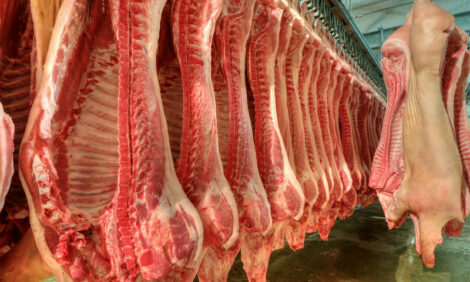



Market Preview: Fewer Hogs Prop Up Prices
US - In this week's US Market Preview published in National Hog Farmer's Weekly Preview, Steve R. Meyer, Ph.D. of Paragon Economics, Inc. writes about about this month's hog situation in the US.The July-August hog price rally was even larger than history suggested it might be – and it may have come to a screeching halt last week. As you can see in Figure 1, USDA’s estimated pork cutout value rose to near record highs. In fact, the weekly average will be the third-highest ever, falling just short of the weeks of 15 August and 22 August in 2008. The cutout value weakened in late-week trading, but it still held at $90.05 on Friday.

This cutout value rally and continued strength in the by-product and variety meat markets have resulted in very good packer margins this summer (see Figure 2). This makes for a pretty good situation when producers and packers can make money at the same time. The drop value as computed by the Livestock Marketing Information Center in Denver has been $18/head or more since last November.

Those margins, combined with continued low slaughter runs, will likely result in cash hog prices remaining relatively strong through August. Last week marked the seventh non-holiday week this year and the fifth of the past eight non-holiday weeks with less than two million head.
National weighted average negotiated purchase prices peaked last Wednesday at $83.54 and stood at $82.17 on Friday. As long as cutout values do not move sharply lower, I think competition for relatively scarce hogs will keep cash prices quite strong. Federally inspected slaughter the past two weeks was 4.9 per cent and 3.9 per cent lower, respectively, and lower than the levels predicted by the USDA’s June Hogs and Pigs report, which were already 5.4 per cent lower than last year. That short inventory of 50 to 119-lb. pigs on 1 June may well have been optimistic. Even extraordinarily heavy slaughter weights (see Figure 3) are not enough to overcome those kinds of shortfalls in hog supplies.

None of this stopped Chicago Mercantile Exchange (CME) Lean Hogs futures from crashing last Thursday and Friday. The best news is that they crashed from a very high level. Further, the prices offered for October and December are probably still profitable, assuming normal basis levels prevail during the delivery period.
Feed Costs Flagged
The red flag in the industry right now is feed costs, but even that is more of a pale red warning at present. Russia’s suspension of wheat exports last week drove wheat futures in Chicago, Kansas City and Minneapolis sharply higher and raised a few questions as to whether we are in 2008 all over again. The answer is “no“ for several reasons.
First, this run-up is much later and we can already see a sizeable US corn crop on the way. It may not be as sizable as some had once thought, and there is quite a bit of discussion about probable yields and the impact of rainy weather. USDA will provide its first yield estimates based on objective data from this year’s fields on Thursday. Another smaller but potentially significant factor will be harvested acres. Wet ground has rendered a good number of acres useless. USDA has projected a 92 per cent harvest rate in its forecasts at present, the second-highest ever.
Second, oil futures are in the low- to mid-$80s vs. $140-plus. That is a huge factor for corn as higher oil means higher gasoline, which means higher ethanol, which means higher corn prices. An increase in the rate of economic recovery could put some upward pressure on oil, as could any decline in the value of the US dollar. Neither appears likely to push oil significantly higher, meaning that corn, though more costly than earlier this summer, will remain low relative to wheat.
That last factor is actually a positive for US livestock and poultry producers as it provides some comparative advantage in international markets, especially vs. the Europeans who usually use a lot of wheat in hog diets.
Canadian Conundrum
Readers will note in our Production and Price Summary tables that data for hog imports from Canada are still not available from USDA. We are not sure what the problem is, but we will follow up with contacts at both the Agricultural Marketing Service (AMS), that publishes the data, and USDA's Animal and Plant Health Inspection Service (APHIS), that gather the data at the border, to see what the snafu is. The most recent data we have is for the week of 3 July. While hog import numbers have become much steadier than in the past, it is still a bit disconcerting to not have data for this important aspect of supply. Ditto for cattle data.










